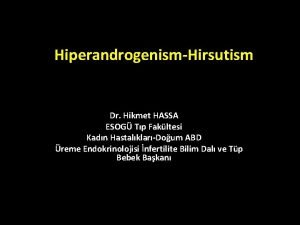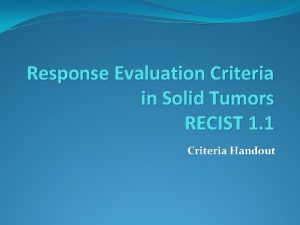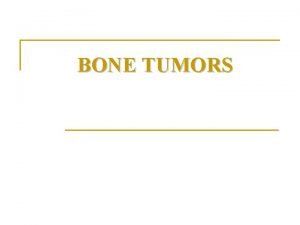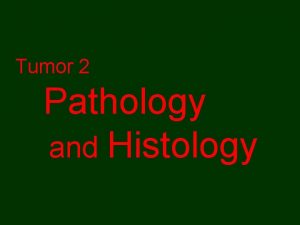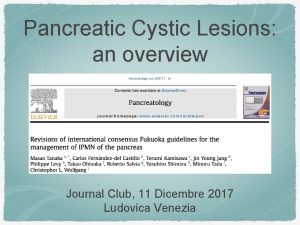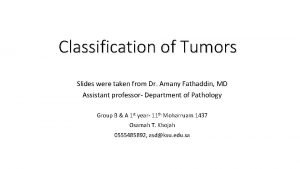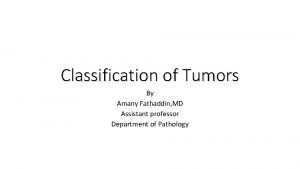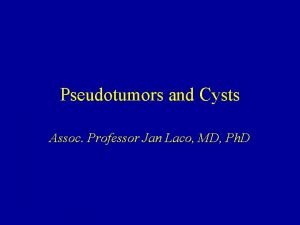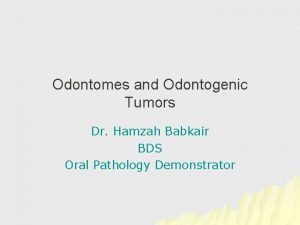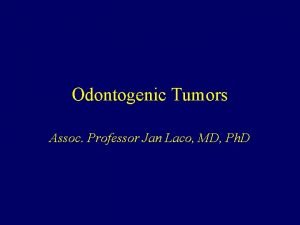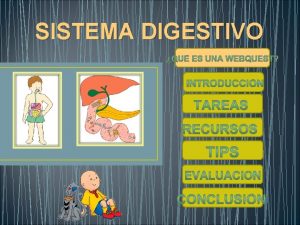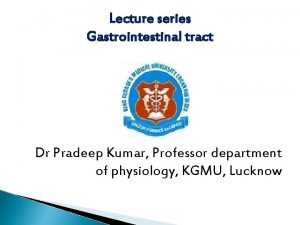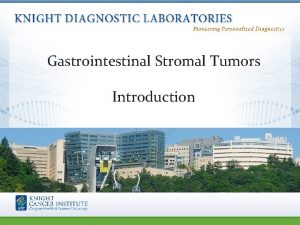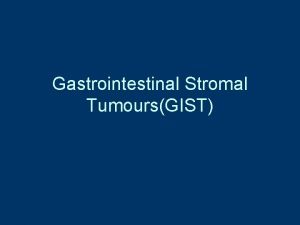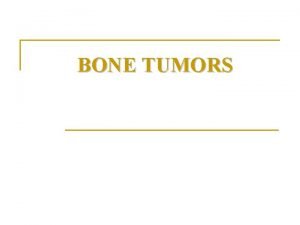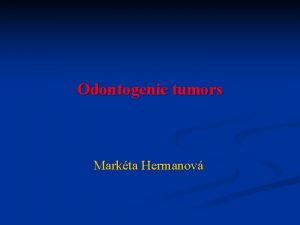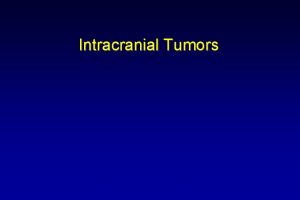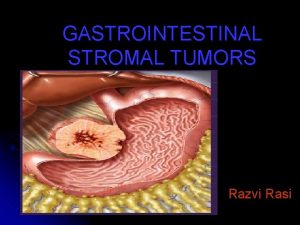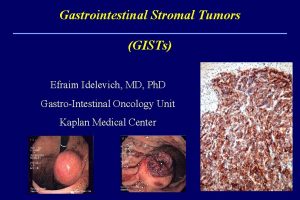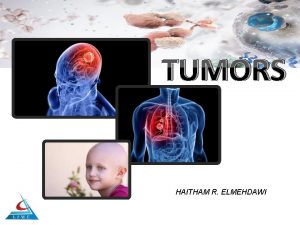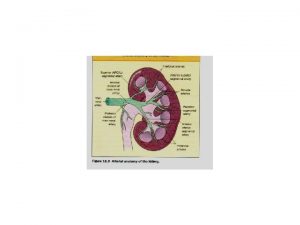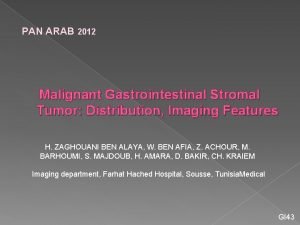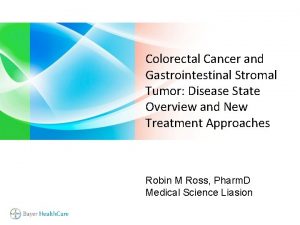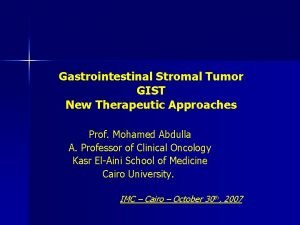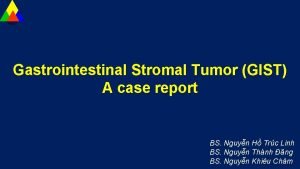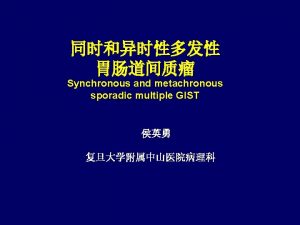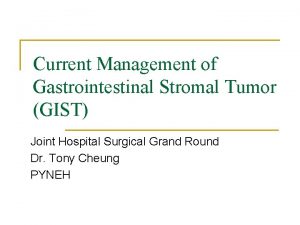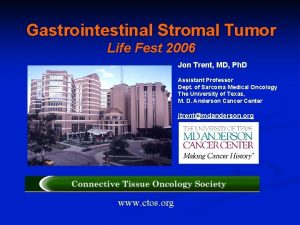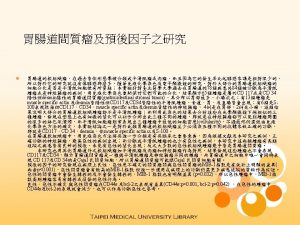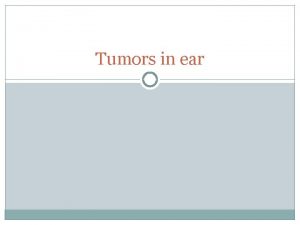Gastrointestinal Stromal Tumors Definition of Gastrointestinal Stromal Tumor

























- Slides: 25

Gastrointestinal Stromal Tumors

Definition of Gastrointestinal Stromal Tumor �the most common mesenchymal malignancy of (GI) tract �the diagnostic criteria for GIST remained controversial and somewhat confusing

Pathology Terms that Encompass the Spectrum of Gastrointestinal Stromal Tumors v Gastrointestinal stromal tumor v Leiomyoblastoma v Gastrointestinal leiomyosarcoma v Gastrointestinal autonomic nerve tumor v Gastrointestinal pacemaker cell tumor v Plexosarcoma v Gastrointestinal neurofibrosarcoma

�KIT expression is noted in the vast majority (more than 95%) of GISTs, � KIT is not expressed by other smooth muscle tumors of the GI tract nor by other stromal tumors outside of the GI tract �The origin of the neoplastic cells of GIST remains a matter of active investigation

�the KIT protein serves as a transmembrane RTK; the CD 117 antigen can be detected by immunohistochemical staining as a marker for the presence of the KIT protein

Clinical Considerations �adults at a median age of 58 years �higher in men �(60% to 70%) stomach, (20% to 30%) small intestine, and fewer than 10% in the esophagus, colon, and rectum. GISTs can also occur in extraintestinal abdominopelvic sites such as the omentum, mesentery, or retroperitoneum.

�abdominal pain �abdominal mass, � nausea, vomiting, � anorexia �weight loss. �acute hemorrhage

�The vast majority of GIST metastases at presentation are intra-abdominal, either to the liver, omentum, or peritoneal cavity. � Metastatic spread to lymph nodes or to extra-abdominal sites via lymphatics is very rare

Diagnostic Evaluation �CT �MRI �upper GI endoscopy �Ultrasonographically enhanced endoscopy

�an epithelioid (larger, rounder cells) or spindle cell histology. �expert pathologists can define a rare subset (fewer than 5%) of GISTs that fail to express CD 117, and these are most likely to be driven by an alternative kinase such as PDGFRA �There are no definitive diagnostic criteria of CD 117 -GIST unless the tumor genotype analysis indicates a KIT or PDGFRA mutation characteristic of GIST

DDX � soft tissue sarcomas Ewing's sarcoma and angiosarcoma � small cell lung cancers, � melanomas � desmoid tumors � seminomas, � ovarian carcinomas, � mastocytomas, � neuroblastomas, � adenoid cystic carcinomas, � subsets of lymphoma and acute myeloid leukemia.


some contribution to prognosis �Other factors, such as the specific histologic subtype (epithelioid vs. spindle cell), the degree of cellular pleomorphism, and patient age, � Recurrence and survival rates have been reported to correlate with the location of the primary GIST lesion, with small bowel tumors showing a somewhat worse prognosis

Diagnostic Imaging �PET FDG-PET imaging can detect lesions at least 1 cm �CT � MRI

Management of Metastatic, Unresectable, or Recurrent Gastrointestinal Stromal Tumor �Cht: P-glycoprotein (the product of the multidrug resistance-1 [MDR-1] gene) and the multidrug resistance protein-1 MRP 1 �RT: bleeding , pain

First Molecularly Targeted Kinase Inhibitor Therapy for Gastrointestinal Stromal Tumor: Imatinib Mesylate �FDA approved the use of imatinib for the treatment of metastatic or unresectable GIST �objective responses � control of symptoms � prolonging the survival

�FDA approval of imatinib for dermatofibrosarcoma protuberans

toxicities �nausea, vomiting, and severe edema, �diarrhea �myalgia or musculoskeletal pain �skin rashes �headache �Myelotoxicity �Cardiotoxicity �hemorrhagic events �tachyphylaxis

FDG-PET represents a useful diagnostic technique for very early assessment of response to imatinib therapy. �The optimal dose of imatinib for treatment of advanced GIST remains uncertain � 18

�some marginal benefit might be obtained from modest dose escalation of imatinib in a subset of patients whose disease progresses despite continued dosing at lower therapeutic levels of imatinib

The optimal duration of imatinib �continued dosing with imatinib as long as the disease is not progressive

�disease that is initially judged as unresectable may become amenable to surgical excision after a major response induced by imatinib therapy. Most centers recommend surgical resection for such patients because it is feared that residual GIST may develop secondary mutations that could result in clinical resistance to imatinib and progression of disease

�sunitinib definitely improved the progression-free survival of patients following imatinib failure due to resistance or intolerance

�Definitive expert surgery remains the mainstay of treatment for patients with localized, primary GIST

Adjuvant Therapy to Improve Outcomes for Patients with Resected Early Stage �The standard of care after complete surgical resection of GIST has therefore been observation alone
 Seks kord
Seks kord Hikmet hassa
Hikmet hassa Teratoma
Teratoma Ectocervix
Ectocervix Malignant and benign tumors
Malignant and benign tumors Response evaluation criteria in solid tumors (recist)
Response evaluation criteria in solid tumors (recist) Bone tumors
Bone tumors Exostosis
Exostosis Spinal cord tumors
Spinal cord tumors Mobile phone brain tumour
Mobile phone brain tumour Chest wall tumors
Chest wall tumors Paresthiasis
Paresthiasis Benign and malignant tumors
Benign and malignant tumors Intraductal papillary mucinous neoplasm
Intraductal papillary mucinous neoplasm Local invasion
Local invasion Classification of tumors
Classification of tumors Odontogenic tumors classification
Odontogenic tumors classification Enneking classification of benign bone tumors
Enneking classification of benign bone tumors Odontogenic tumors
Odontogenic tumors Ameloblastoma rtg
Ameloblastoma rtg Thyroid tumors
Thyroid tumors Benign tumor definition
Benign tumor definition Embriologia del sistema gastrointestinal
Embriologia del sistema gastrointestinal Gastrointestinal tract
Gastrointestinal tract Chemotrypsinogen
Chemotrypsinogen Emt chapter 18 gastrointestinal and urologic emergencies
Emt chapter 18 gastrointestinal and urologic emergencies

